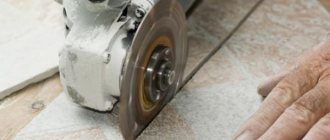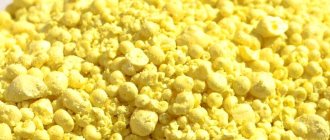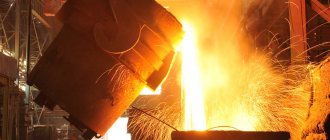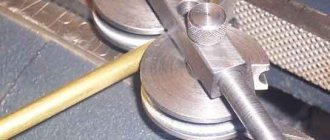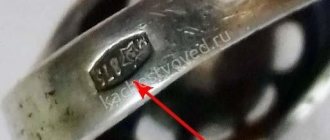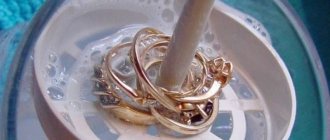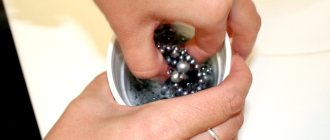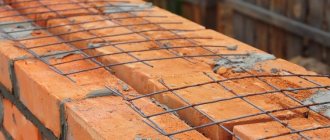How silver is refined at home with video - electrolysis, from contacts, etc.
Silver is gradually becoming the most popular precious metal. Some sources already say with confidence that gold is receding into the background, giving way to gold. Of course, the issue of carrying out refining procedures in relation to silver is becoming more and more urgent. It is the details of this procedure at home that will be discussed in this article.
Extracting pure silver from various alloys that make up many contacts, transistors and relays is a long-established practice.
To obtain pure precious metal, it is necessary to use special technologies to purify it from impurities, which are collectively called refining. The essence of this procedure lies in its stages, through which it is possible to obtain pure silver, gold or platinum.
In general, this procedure is a purely industrial process, but nowadays silver refining can be carried out at home.
The following objects are suitable for cleaning:
- scrap silver jewelry;
- sludge from electrical cleaning of silver;
- technological scrap containing silver;
- the so-called “silver foam” is waste from the lead industry.
Alternative methods for refining silver include:
- cupellation;
- electrolytic method;
- chemical methods.
The choice of refining method depends on the following factors:
- amount of refined precious metal;
- continuity of production;
- the state of the metal that can be processed.
Did you know that the electrolytic method of refining silver is used when the starting material is high-grade silver.
In the event that silver is dissolved in the state of sulfate or chloride, it is most rational to use chemical or electrochemical treatment of the precious metal.
Cupellation
Refining of low-grade alloys is carried out by the cupellation method, which is based on the unique property of lead, molten with silver, to oxidize in air and separate from the metal along with other impurities.
It is important! The cupellation process does not separate the only gold, platinum and platinum group metals.
For cupellation, a special furnace with a cup-shaped crucible, which is covered with marl, is used.
Reference! Marl is a special porous limestone clay endowed with a feature that promotes the absorption of lead oxide.
The step-by-step process of silver cupellation can be represented as follows:
- The oven is preheated.
- An assay crucible with technical silver and lead is placed in the furnace.
- The crucible must be heated until completely melted.
- Atmospheric air is passed into the oven.
- After the thermal reaction, the crucible is removed from the furnace and poured into molds.
After the alloy cools, it will take on a rainbow color. This means that it contains both silver and other precious metals.
Thus, by cupellation it is possible to obtain exclusively an alloy of silver with other precious metals.
Electrolytic method
Electrolytic refining of silver must be carried out in special cells made of plastic or sandstone that contain a solution of silver nitrate. The coefficient of pure precious metal in such a solution must be at least 50 grams per liter.
In this process, the anode will be contaminated silver, and the cathode will be thin strips of stainless steel.
The anodes should be placed in fabric bags, in which undissolved contaminants in the form of silver particles that have escaped electrochemical dissolution will subsequently be collected. Silver will be deposited on the cathodes in the form of macrocrystals. Such crystals grow towards the opposite pole until a short circuit occurs, to avoid which the branches of the crystals break when the solution is stirred in a direction parallel to the electrodes, at a short distance from the cathode.
Such crystals spontaneously fall into a basket at the bottom, from where they must be periodically removed. It is from these crystals that the ingots are subsequently cast.
Chemical method
To extract silver from salt or solutions, it is necessary to use a chemical method, as a result of which the precious metal is released in the form of black silver sulfate. To use this method, it is necessary to add sodium sulfate. The operation must be continued until the release of silver sulfate completely stops.
In general, in this procedure, the precious metal is recovered as chloride only after the addition of one of the alternative substances: either ammonium chloride or table salt. The resulting liquid must be settled until it is completely separated into two fractions: transparent and cloudy.
It is important! If the subsequent addition of salt does not cause the solution to become cloudy, then all the silver is in the precipitate.
Silver can be extracted from silver chloride in two ways:
- dry, namely casting in the presence of alkali metal carbonates;
- from the solution, bringing the sample to the maximum value.
Required materials and tools
In accordance with the descriptions of each of the individual methods of refining silver at home, we provide lists of materials and tools necessary for their implementation.
Cupellation:
- Bake.
- The crucible is in the shape of a cup covered with marl.
- Lead.
Electrolysis:
- Special cells made of sandstone or plastic.
- Nitric acid.
- Fabric bags.
Chemical methods:
- Sodium sulfite.
- Ammonium chloride.
- Salt.
- Nitric acid.
- Sulfuric acid.
- Special utensils, the material for which is selected depending on the components of the procedure.
Step-by-step electrolysis of silver at home
It is important! All the methods described above are applicable at home. However, if you do not have “refining experience,” then it is best to use the electrolytic method of refining silver.
Conventionally, this process can be divided into three parts:
- Dissolution of precious metal in nitric acid.
- Cementation of silver and its fusion.
- Direct refining.
At the first stage you will need:
- nitric acid solution 68.8%;
- glass container;
- quartz stick.
Nitric acid 68.8%, deionized water, scales, glass container and quartz rod
It is important! When working with acids, do not forget that you need good ventilation (it is best to work in fresh air), protect the skin of your hands with gloves, your eyes with safety glasses, and pour the acid into water, and not vice versa.
The process of selecting proportions
- To obtain dilute nitric acid, you need to mix deionized water with pure acid in a 1:1 ratio.
- Mix the resulting liquid with a quartz stick.
- We pour the acid into special containers for chemical reagents.
- We prepare silver nitrate based on the entire process. We need a concentration of approximately 50 grams of silver per liter of liquid.
- Dissolve silver in liquid. This process is usually accompanied by the release of NO2 gas and the solution turning blue.
- The dissolution process is long. Silver will completely dissolve no earlier than after 8–10 hours.
- The resulting solution should be sealed in a chemical jar.
- Next we get “silver cement”. To do this, it is necessary to displace metallic silver from silver nitrate with copper.
- Take a solution of silver nitrate, add copper.
It is important! Old water pipes that need to be cleaned to a shine can be used as a source of copper.
This is what copper tubes look like in solution
The addition of copper provokes an acceleration of the reaction. The resulting silver cement on the tubes is silver in powder form.
To ensure that the speed of the process does not decrease, it is necessary to periodically shake off the cement from the tubes into the solution.
Silver refining: at home
Currently, there are many known methods for purifying metals, applicable both in the laboratory and at home. One of these methods is refining, which until recently was used exclusively at specialized enterprises using patented technologies.
What is refining
Typically, the concept of “refining” means obtaining a metal of high purity through a series of procedures to remove impurities. This process is carried out in several stages, at each of which certain physical and chemical methods are used to separate interfering substances. Precious metals are often purified in this way.
The raw materials for refining in this case can be jewelry scrap, “silver foam”, sludge after electrical purification of the relevant substances and spot gold.
Silver refining
This cleaning method is often used to obtain high-grade silver. In general, the procedure is no different from similar techniques carried out for other noble, ferrous or non-ferrous metals. For example, the refining of gold and silver or any platinum metals can be the same. Only in some cases the procedures differ.
In processing technology, silver refining is represented in three different ways - the metal can be purified from impurities by chemical, electrolytic or cupellation methods. Removal of excess chlorine is rarely used. The choice of technique is determined by the amount of silver processed and its condition. The characteristics of the production process also matter.
How the path is chosen
For initially high-grade silver, electrolytic refining is used. Typically, when using this method, there is daily production. Electrolysis helps to obtain silver of exceptional purity due to redox reactions, in which impurities do not enter during purification.
In the case when argentum is in the form of a solution (insoluble sulfates and chlorides), the most economical and convenient way to deposit the metal is the chemical (in some situations, electrochemical) method.
Low-grade alloys are most often separated using cupellation - in this case, it is easiest to increase the purity of the mixture.
Cupellation method
This type of refining requires a furnace with a cup-like (assay) crucible. The purification process uses lead, the melt of which with silver is oxidized in the presence of oxygen. All impurities, including the solvent, are separated from the noble metal, giving it relative purity: gold and platinum family metals remain in the alloy.
To carry out refining, the furnace must be preheated. A technical lead-silver mixture is placed in it, which is heated until completely melted. Atmospheric air flows are launched into the oven, causing oxidation of the content components. Upon completion of the heat treatment, the crucible is removed and poured into molds.
The inside of the oven is lined with marl, a type of clay enriched with limestone and having a porous structure. It absorbs lead oxides formed during the refining process, since the latter are prone to evaporation when exposed to air currents. At the output, after oxidation of impurities, an alloy with a rainbow-iridescent surface is obtained. When it cracks, a bright silver sheen can be seen in the mixture, which indicates the completion of refining.
Cupellation is considered the roughest method of purification due to the fact that complete removal of impurities is not achieved: all noble metals in the alloy remain in place. Refining of gold, silver and platinum group metals for their separation is carried out by other methods.
Electrolysis method
Electrolysis as a refining method is carried out with the consciousness of a double electronic layer: the anode of the process becomes a contaminated fragment of silver placed in a bag, the cathode is thin plates formed from non-corroding steel. The electrodes are immersed in a solution of nitrate of the metal being purified (ion concentration up to 50 mg/ml), nitric acid with a density of 1.5 g/l is added, and an electric current is passed.
Undissolved silver fragments, as well as contaminants, collect in the anode bags. A pure sample in microcrystalline form is collected in the cathode space. The volume of released silver may increase towards the other pole of the system, causing a short circuit.
To prevent such a situation, the grown crystalline fragments, when stirring the solution, break off parallel to the electrodes near the cathode location. The resulting silver is recovered as sediment and subsequently cast into bars.
It is important to replace the electrolyte on time, since if copper is present as an impurity, at the end of the desired process, its deposition on the cathode on top of the noble metal will begin.
The essence of the silver purification method
Silver refining is considered to be a combination of various technologies used to purify the metal from foreign impurities. Until recently, it was possible to carry out such events only at industrial enterprises involved in the production of high-grade silver. Now many people practice silver refining at home. If you know the intricacies of processing ferrous or non-ferrous metals, then there will be no difficulties with refining silver, because these procedures are similar to each other.
The most commonly used cleaning products are:
- decorations;
- technical silver from radio components;
- unwanted jewelry that is left without a pair or is simply unsuitable for wearing
- waste generated during lead refining.
The choice of DIY cleaning method depends on the following factors:
- amount of starting material;
- condition of the metal being processed;
- the need for continuity of the process.
When processing quality products, it is better to use the electrolyte method. It is suitable for the continuous production of large volumes of high-quality silver. The purity of the raw material is achieved due to the absence of redox reactions during refining.
If the silver is in the form of a solution, then it is recommended to use the chemical method. Sometimes it is possible to carry out refining using an electrochemical method.
Cupellation is suitable for cleaning low-grade alloys. With its help, you can finish pure silver much faster and more efficiently.
The cleaning procedure using any of the methods is carried out in several stages. During each process, the necessary raw materials are separated from the main composition.
Refined silver
Technical silver - what is it?
Technical silver and its compounds are repeatedly mentioned in the FKKO, where waste is sorted into specific groups that combine secondary raw materials according to certain parameters. The main feature of the classification is the hazard class of materials or items in the manufacture of which they are used.
Technical silver has been mentioned more than once on our website in articles:
- Scrap radio components;
- Scrap silver.
Technical silver and its configurations fall into several hazard classes together with waste:
- silver chloride formed during technical tests - class 2;
How to clean jewelry with stones and gold plated?
In this case, it is necessary to take into account important nuances - exquisite silver items with enamels, chains with stones, earrings with inlay, gilded inserts require special treatment.
It is undesirable to use traditional methods, since aggressive acidic and alkaline agents, as well as boiling and heating, can severely damage the product.
Typically, special pastes are used to clean fine jewelry:
- Town Talk;
- Aladdin;
- Talisman, etc.
If the silver is gold plated, you will have to clean the item much less often. Such a product does not turn black for a long time and practically does not fade - such are, for example, Pandora products.
If small tarnished areas are found, you can use one of the professional cleaning pastes mentioned above. However, when choosing a product, you must choose one that suits both silver and gold.
If we are talking about cleaning a product that has artistic, historical value or is simply very beautiful and expensive, complex work, it would be correct to take it to professional jewelers.
Methods for separating silver from copper at home
Experts say that nowadays, silver (Ag) products are becoming increasingly popular. There are many reasons for this - the price, which is an order of magnitude lower than that of gold, practicality, and, of course, beauty.
Very rare - pure silver without impurities
The procedure for separating it from copper is becoming more and more popular, because it is quite rare to find products made from pure silver without impurities. The separation process is called refining, and it can even be done at home.
What is the refining procedure?
It has long become popular to extract pure silver from alloys from which various parts and contacts are made. In order to obtain real pure precious metal at the output, you need to use a special separation technique called refining. It is thanks to it that you can separate silver particles from other metals, including copper.
Small silver bars for refining
Ideal for extracting pure silver:
- Scrap old silver jewelry;
- Waste from electrical cleaning of silver;
- Technological scrap, which contains silver;
- Waste from lead production, which is popularly called “silver foam”.
There are several ways to help separate Ag from other metals. The main ones are:
- cupellation;
- electrolytic method;
- chemical method.
The choice of method to be used depends on the volume of material, its composition and condition.
Causes of dark plaque
Silver tarnishes and becomes covered with dark spots for completely natural reasons that have a chemical basis.
Silver sulfide film
For a film to appear on the surface of a silver object, two conditions are necessary:
- high humidity;
- contact with sulfur-containing compounds.
Both of these conditions are achieved by wearing silver jewelry on the body.
If a person's sweat contains a lot of sulfur, silver jewelry will blacken and tarnish quickly.
Conversely, sweat containing a large amount of nitrogenous compounds will help keep jewelry shiny throughout the entire period of wear.
Of course, the sulfide film does not appear instantly - it takes long enough wear for the jewelry to turn black.
Oxidation
Since silver is a noble metal, neither nitrogen, nor oxygen, nor hydrogen can affect it.
However, dishes are usually made not from natural silver, but from alloys.
These additives from copper and other metals cause oxidation of the surface of silver products and the appearance of a dark coating on them.
Note that the lower the standard of the silver product, the more active and faster the oxidation process will occur.
Contact with aggressive substances
When it comes to silverware or jewelry, their darkening is often caused by contact with household chemicals, medications - solutions, ointments. Sometimes foods such as eggs, onions can also cause plaque to appear.
By the way, in the old days, when nothing was known about chemical reactions, it was believed that silver darkened due to the influence of dark magic.
Next, we will get acquainted with the most effective methods of purifying silver from blackness.
